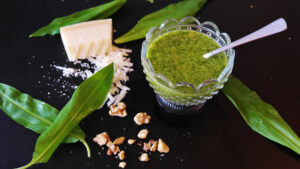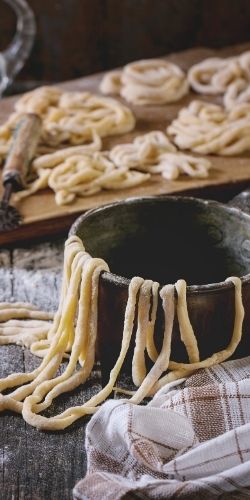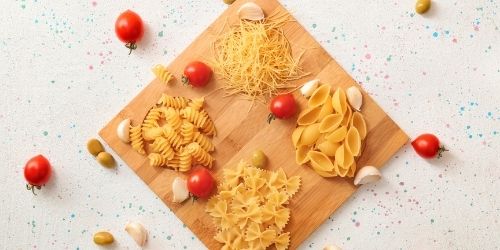
Pesto: yesterday, today and wine pairing
Pesto is one of the Italian masterpieces and among the most famous cold sauce in the world. Although the classic “Pesto alla Genovese” was created
History of pasta
Pasta is a Greek word which means to knead. In Ancient Greece and Ancient Rome the use of flour mixed with salt and water was very common. In the 4th century BC a Greek writer used the word “laganon” to refer to layers of fresh pasta. This word is the ancestor of the famous Italian dish lasagne.
Even though the Chinese claim to have invented Pasta, we can find traces of Pasta in China and in Ancient Greece in the same period but the ingredients and shape were different. The fact that Marco Polo brought pasta to Italy from China was probably just a legend.
Since the Arabs didn’t have easy access to water, they probably were the first to dry the pasta in the 9th century.
In the 16th century short versions of pasta appeared in the southern regions of Italy. In Naples, the pasta was referred as maccheroni, from the verb ammaccare which means to mix/to knead.
Whereas in Italy pasta was a dish for common people, in Europe it was consumed only during rich banquets at court.
Nowadays in Italy we eat pasta almost everyday and we have a lot of different varieties of pasta. Filled pasta such as tortellini, ravioli and agnolotti are more common in north Italy whereas short pasta such as maccheroni, rigatoni and penne are more common in south Italy.

Which is your favourite pasta type? Leave us a comment below, we are very curious.

History of pasta

Pesto is one of the Italian masterpieces and among the most famous cold sauce in the world. Although the classic “Pesto alla Genovese” was created

Tiramisù origin curiosity wine pairing Tiramisù is without doubt the most famous Italian dessert in the world. As for other classic Italian recipes many are the
